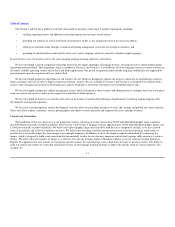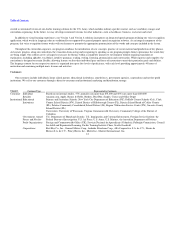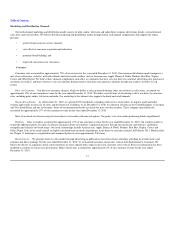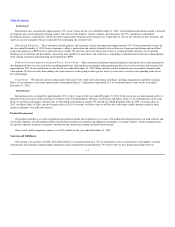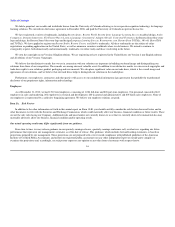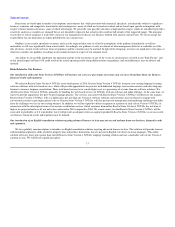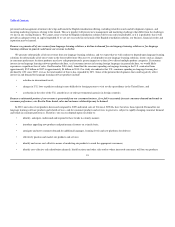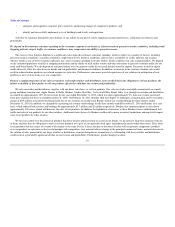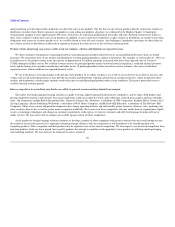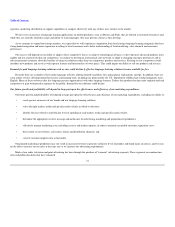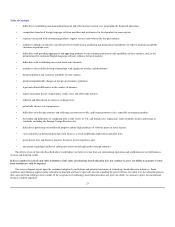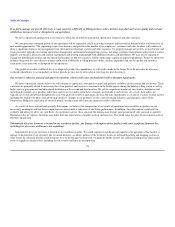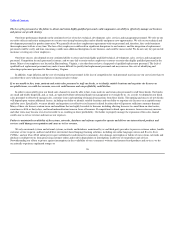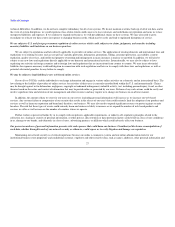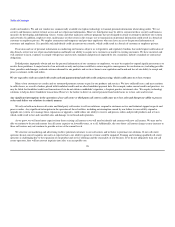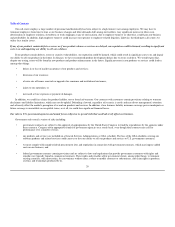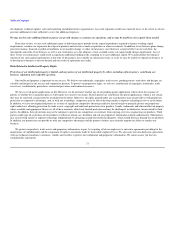Rosetta Stone 2010 Annual Report Download - page 23
Download and view the complete annual report
Please find page 23 of the 2010 Rosetta Stone annual report below. You can navigate through the pages in the report by either clicking on the pages listed below, or by using the keyword search tool below to find specific information within the annual report.
Table of Contents
expertise, marketing, distribution or support capabilities to compete effectively with any of these new entrants to the market.
We have seen an increase of language learning applications on mobile platforms, such as iPhones and iPads, that are offered at extremely low prices and,
while they are currently limited in scope and ability to teach languages, they may present a threat as they develop.
As we continue to expand into foreign markets, we expect that we will experience competition from local foreign language learning companies that have
strong brand recognition and more experience in selling to local consumers and a better understanding of local marketing, sales channels and consumer
preferences.
Our success will depend on our ability to adapt to these competitive forces, to adapt to technological advances, to develop more advanced products more
rapidly and less expensively than our competitors, to continue to develop an international sales network, to adapt to changing consumer preferences and to
educate potential customers about the benefits of using our solutions rather than our competitors' products and services. Existing or new competitors could
introduce new products and services with superior features and functionality at lower prices. This could impair our ability to sell our products and services.
Demand for paid language learning solutions such as ours could decline if effective language learning solutions become available for free.
Presently there are a number of free online language websites offering limited vocabulary lists and grammar explanations and tips. In addition, there are
some online services offering limited free lessons and learning tools, including one sponsored by the U.S. Department of Education to help immigrants learn
English. Many of these websites offer free language practice opportunities with other language learners. If these free products become more sophisticated and
competitive or gain widespread acceptance by the public, demand for our solutions could decline.
Our future growth and profitability will depend in large part upon the effectiveness and efficiency of our marketing expenditures.
Our future growth and profitability will depend in large part upon the effectiveness and efficiency of our marketing expenditures, including our ability to:
create greater awareness of our brands and our language learning solutions;
select the right market, media and specific media vehicle in which to advertise;
identify the most effective and efficient level of spending in each market, media and specific media vehicle;
determine the appropriate creative message and media mix for advertising, marketing and promotional expenditures;
effectively manage marketing costs, including creative and media expenses, in order to maintain acceptable customer acquisition costs;
drive traffic to our websites, call centers, kiosks and distribution channels; and
convert customer inquiries into actual orders.
Our planned marketing expenditures may not result in increased revenue or generate sufficient levels of product and brand name awareness, and we may
not be able to increase our net sales at the same rate as we increase our advertising expenditures.
Much of our radio, television and print advertising has been through the purchase of "remnant" advertising segments. These segments are random time
slots and publication dates that have remained
21
•
•
•
•
•
•
•


